2019 | Perspektive Deutsches Kino
Cinematic Roots in the Here and Now
With twelve films in the programme, eleven of which are world premieres, Perspektive Deutsches Kino presents an eclectic snapshot of the current work of young filmmakers. In this interview, section head Linda Söffker discusses the tenderness of words, the international in German film and the core questions being tackled by the next generation of filmmakers.
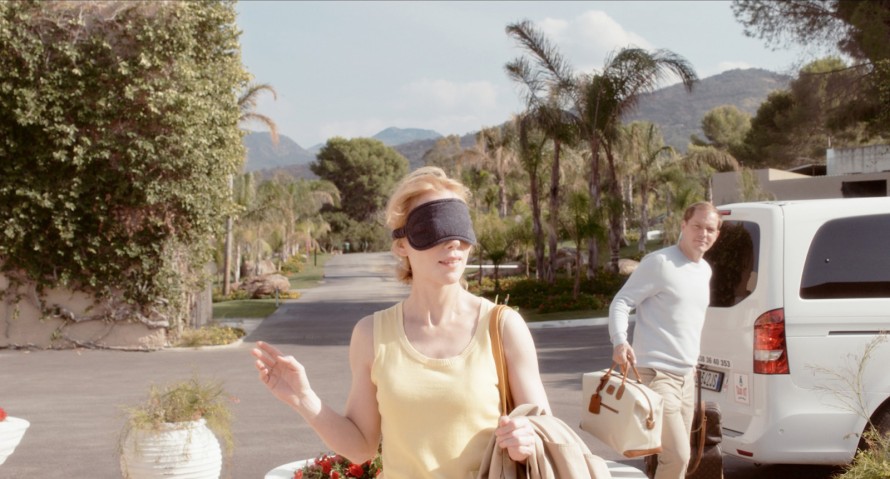
Franziska Petri and Godehard Giese in Off Season by Henning Beckhoff
This year, the Perspektive Deutsches Kino programme turns to the complex topic of love in all its facets: love for a person, a place, or for the cinema. What is being searched for in these films? What questions are being asked?
Among the new generation of filmmakers, the underlying questions are often very similar. They deal with issues like “Where do I come from?” and “Where am I going?”. They ask about their parents, their own roots and backgrounds. Mostly the films have a less political content – although we also have explicitly political works in the programme – but are basically about topics preying on the minds of these young filmmakers.
Love is a central, constantly reoccurring theme: the different possibilities and ways of approaching love – generally the question: what is love? What did it mean in the past and what does it mean now?
At the same time, the filmmakers explore their own insecurities. They ask questions about the freedom they need and, simultaneously, about the uncertainty that arises from the difficulties of coping with certain freedoms.
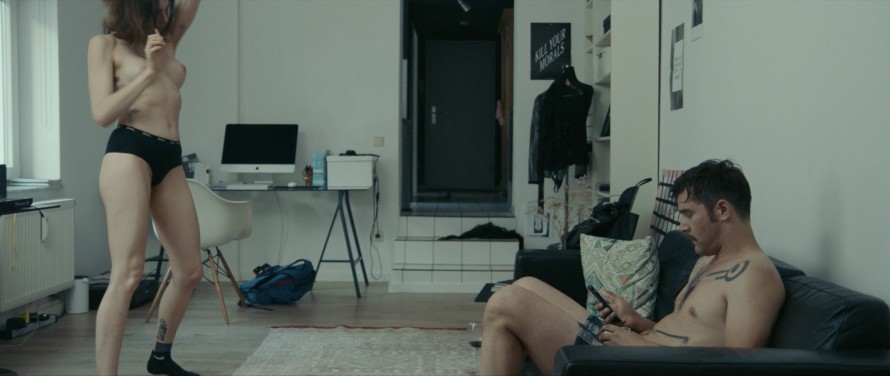
Miriam Urbanzke und Sönke Andersen in easy love by Tamer Jandali
Some of the works including, for example, this year’s opening film easy love by Tamer Jandali, take an experimental approach to explore these topics. Does this opening up to freer cinematic forms reveal a tendency towards the form specifically chiming with the content?
I would define our opening film as a documentary fiction film. This playfulness with formats and the hybrid forms is accompanied by questions such as “What does life mean today?” and “How do I react when traditional values are being thrown overboard?”. And it is connected to the search for new rules, a new way of approaching things, a search for form – which, in film, is also an aesthetic search.
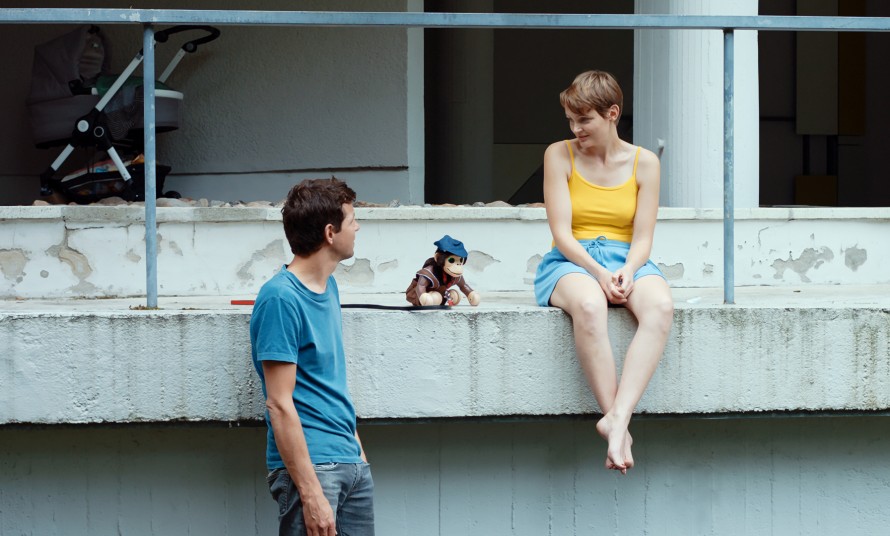
Ole Lagerpusch and Birte Schnöink in Die Einzelteile der Liebe by Miriam Bliese
The films are often also about examining forms of communication. Language, talking of and about love and dialogue all play a substantial role. The spoken word takes on a special significance here – I'm thinking, for example, of Die Einzelteile der Liebe (The Components of Love) or Oray...
Die Einzelteile der Liebe by Miriam Bliese, is a mosaic in terms of both its topic and form. It narrates in an elliptical way the past, present and future of a couple. The language of the two changes and, depending on where you are in the film, the tenderness underlying the words changes, too. As the viewer, you have to be very attentive to understand where the characters are – whether they’re at the beginning of their relationship or have already split up. This can actually be divined by the way in which the two people talk to each other and what linguistic level they are on at any given moment.
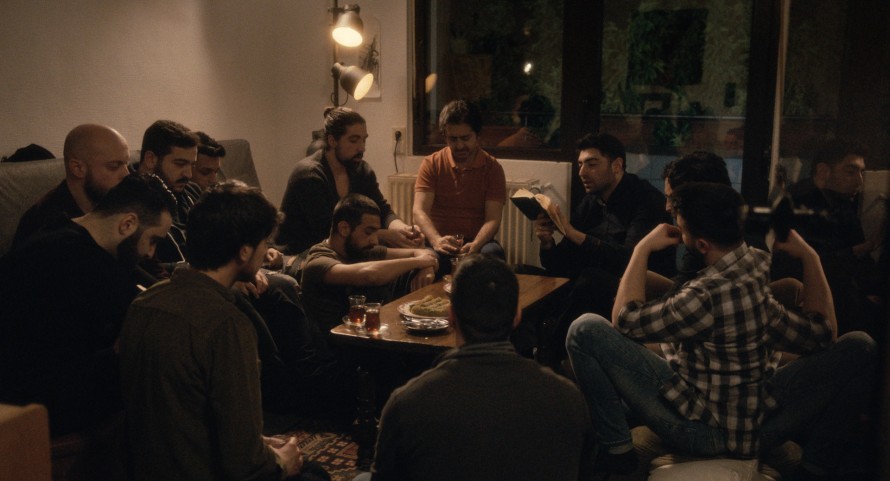
Zejhun Demirov, Faris Yüzbasioglu and Ferhat Keskin in Oray by Mehmet Akif Büyükatalay
Oray, directed by Mehmet Akif Büyükatalay, comes down to a single word and its meaning: in an argument with his wife, the eponymous protagonist utters the Islamic formula “talaq” which, depending on its interpretation, can either mean that the two will have a break in their relationship or that they must divorce. So here, a word spoken in anger leads to an essential crisis of meaning that compels Oray to make a decision: either for the love for his faith or the love for his wife.
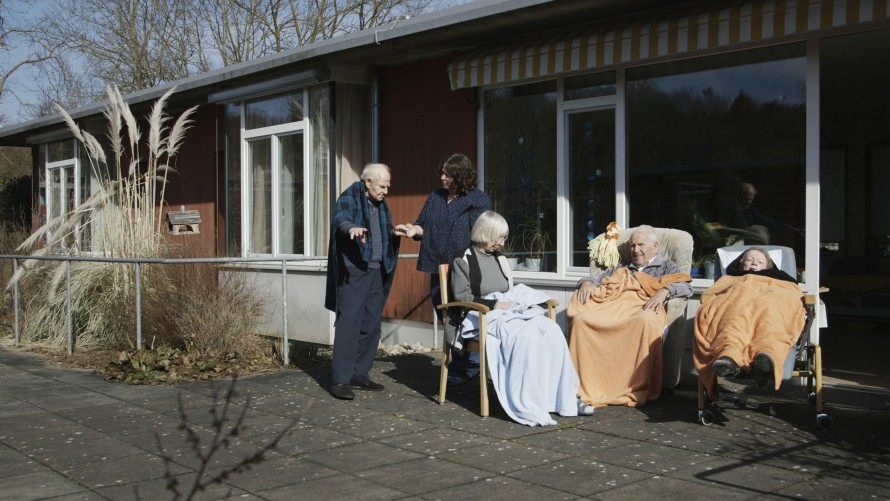
Das innere Leuchten by Stefan Sick
Das innere Leuchten (The Inner Light), on the other hand, is very different. Stefan Sick documents the lives of people in a nursing home who have dementia and so no longer have so many words at their disposal. They have forgotten a lot. Their way of expressing themselves is very physical and works more via noises. The film develops an incredible intimacy with its characters and their everyday lives – you can’t help but love them. Alongside confronting us with the fear of growing old, the film also depicts its beautiful moments. Although the people with dementia can no longer employ unambiguous language or articulate coherent sentences, they do make themselves understood via sounds and body language.
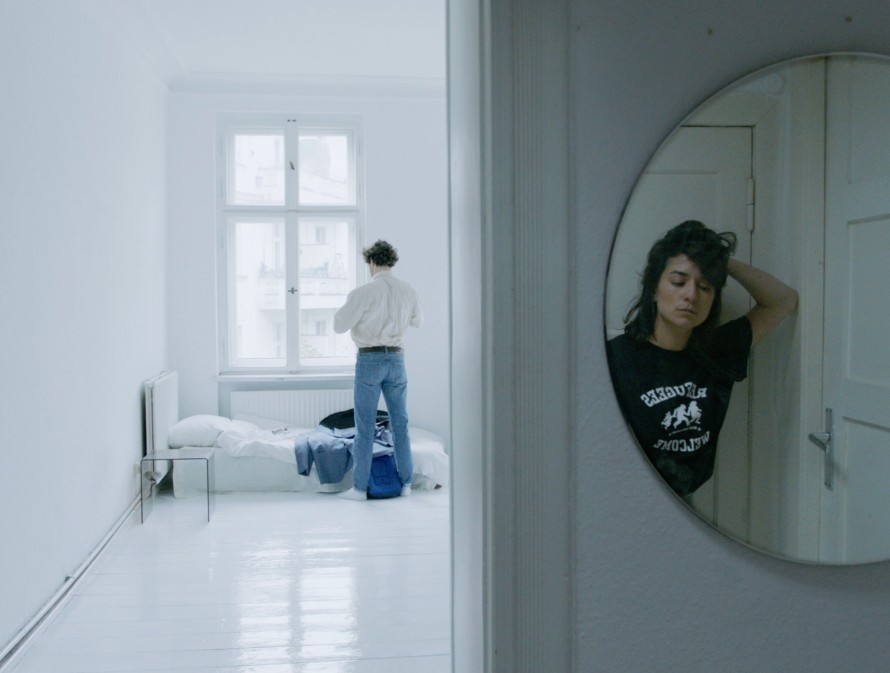
Pascal Houdus and Raha Emami Khansari in Dreissig by Simona Kostova
This aspect of the physical-emotional also seems, in a sense, to refer to the aforementioned search for emotions. Or, to be more precise, the search for ‘real’ emotions – for what Tamer Jandali calls ‘no fake emotions’ in the opening credits of easy love. Does this indicate a departure from a cinema that is considered to be overly intellectual?
In the very least we have a number of films in the programme that emphasise life in the here and now. They include Dreissig (Thirty) by Simona Kostova, Heute oder morgen (Before We Grow Old) by Thomas Moritz and certainly also easy love. These films are about and are told from the perspective of a generation aged around 30. Often the filmmakers are about the same age as their protagonists who live according to the motto ‘we really want to go for it’ by taking drugs and having fun – and, in doing so, gloss over any vulnerabilities or, in the very least, smooth them out. Neither the future nor the past plays a big role, just the single night they have, the here and now, the party.
Many of the selected works focus on a certain period or stage of life. Alongside the young generation living excessively in the present, there are also films like the aforementioned Das Innere Leuchten and also Berlin Bouncer that explore the circumstances of ageing and of taking a look back.
Yes, certainly among the documentaries there is a number of works that look back at the past. But they are not so much about age per se as about tracing the preconditions of one’s own existence.
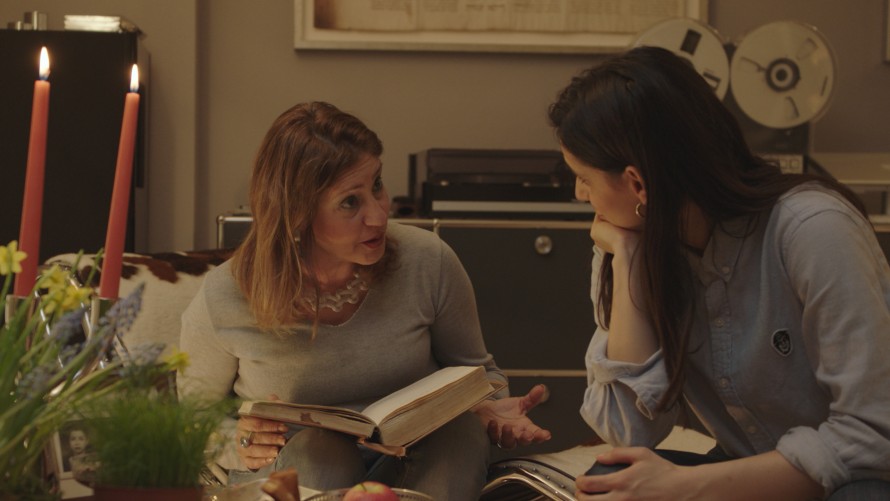
Born in Evin by Maryam Zaree
In Born in Evin, for example, the director Maryam Zaree makes an allegorical visit to her birthplace, a prison for political prisoners in Iran. She questions her mother, who remains silent about the circumstances of her daughter’s birth, and talks to other survivors to get a grasp on the terrible place but also on her own origins.
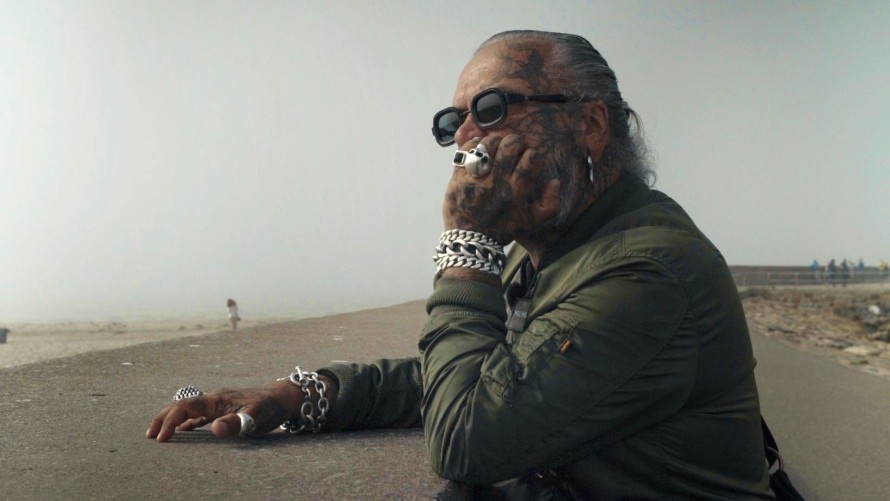
Sven Marquardt in Berlin Bouncer by David Dietl
Another film that casts a glance into the past is David Dietl's Berlin Bouncer. Via this portrait of three legends from the Berlin club scene, the film also tells a bit of German history. The doormen Smiley Baldwin, Frank Künster and Sven Marquardt have very different backgrounds and career histories. The film traces them by showing their entirely individual views on the divided Berlin.
Alongside this look into temporal dimensions, the location of events also plays a decisive role in the selected works. And the scene is often explicitly linked to the biographies of the filmmakers, especially the directors.
To explore the concept of home, your origins and your own roots is definitely an important aspect in the work of new filmmakers – which I can totally understand. On the one hand, people like to return to the places of their childhood; on the other, it is also an opportunity to tell the world more about themselves and especially their roots.
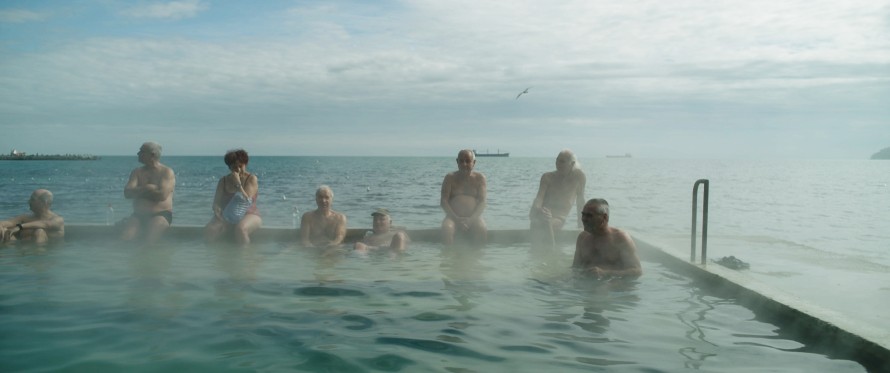
Die Grube by Hristiana Raykova
For Dust, the director Udita Bhargava travelled to her Indian homeland and sent the protagonist of her film on a search for his lost love there. Or Hristiana Raykova, whose documentary Die Grube (The Pit) – about a thermal spa by the Bulgarian seaside and the people who visit it – was made at her birthplace, is also an example of this. Raykova depicts both the place and its inhabitants. This ‘pit’ has been a place for socio-cultural exchange for generations. Many older people use the spa like a bakery or a pub – as a meeting place where they can tell their stories and, at the same time, ensure the spot will continue to exist.
So it has become a very international programme, even though it continues to be called Perspektive Deutsches Kino. With this more globe-spanning selection, are you also, to an extent, sounding out anew what it can mean to talk about ‘German cinema’?
Eighteen years ago, Dieter Kosslick embarked on his time as Berlinale director by creating, in the Perspektive Deutsches Kino, a section for the next generation of filmmakers. It was his intention to do more for German film and, also, specifically to design a place for young filmmakers. He wanted – and continues to want – to give them the chance to position themselves at an A-festival alongside many established filmmakers. He intends to break down fears and promote self-esteem – all this needs to be learnt: to appear in front of 500 people and defend your film in a public discussion, or to celebrate it, which is, of course, easier.
But to return to your question: from the start, the definition has been that the film should be a majority German production, which means, over 50 percent of the production money should be German. And because many of the films that we screen are debut works, they often come from German film schools and fulfil the criteria that way.
But the world has changed in the years since the Perspektive was created. Eighteen years ago the films were, on average, more ‘German’ than they are today. Just as the world has opened up, making it easier to travel, so German film has opened up too.
Are there also other factors which have contributed to this internationalisation?
One aspect is that the equipment has become lighter and easier to handle and the camera technology has become much more advanced. It is now possible to film with much smaller crews and much cheaper conditions all round the world.
But on the other hand it is also true that many young directors from other countries are coming to Germany, and particularly to Berlin, to train at the film schools and learn their trade. That is another reason why the conditions have changed a lot in the past few years and we now find ourselves in the enviable position of being able to show debut films from all around the world.
Is there a geographical focus?
This year we named a small part of the programme ‘Trip to Italy’.
We included Off Season by Henning Beckhoff in this selection which was shot in Sicily and features Godehard Giese and Franziska Petri, both very well-known to Perspektive. The location makes its presence very much felt in this film.
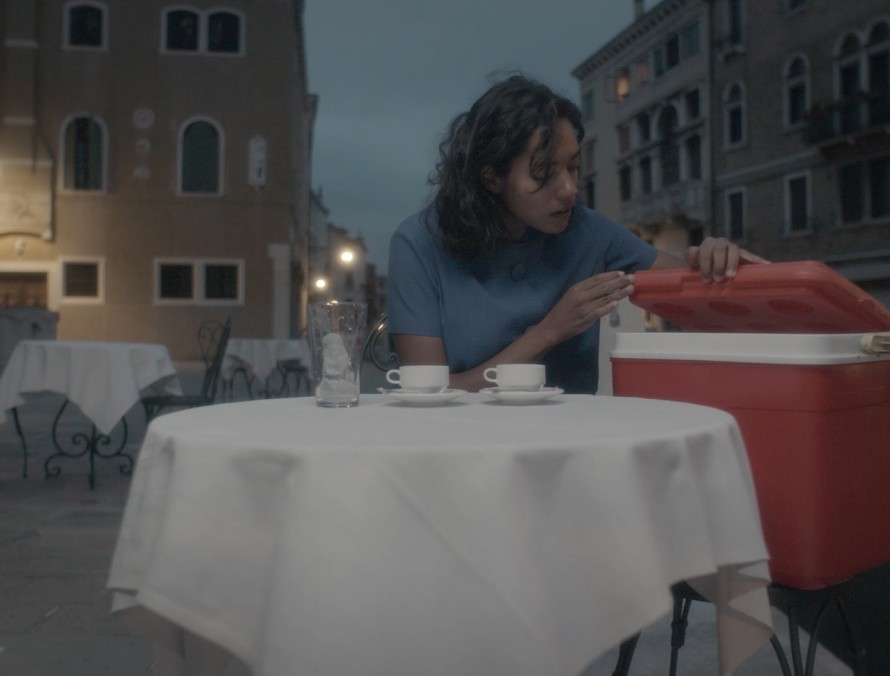
Salka Weber in Fisch lernt fliegen by Deniz Cooper
We are also showing Fisch lernt fliegen (Fish Takes Off) by Deniz Cooper, which is a film about Venice of a very different kind. It has something surreal about it. Shot in a 4:3 aspect ratio, the images are often composed symmetrically and the communication between the characters is very stagy. But it is really the way in which the city is depicted which makes this film extraordinary. The locations were always shot at dawn, with a very clear, special light. And because it was so early in the morning the streets, and even the Rialto Bridge, were totally lifeless – the story unfolds in this deserted Venice.
This year, alongside the films selected for the official programme, you have once again invited guests to the Perspektive. Who is coming?
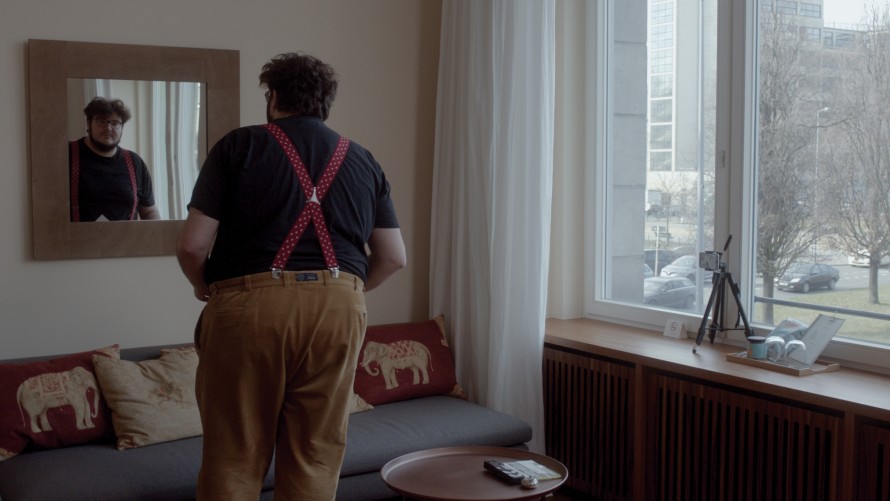
Axel Ranisch in 6Minuten66 by Julius and Katja Feldmeier
One of the three guests in this year’s Perspektive is the film 6Minuten66 (6Minutes66), a cinematic experiment by Julius and Katja Feldmeier. The premise is that 15 young filmmakers, already on their way up and with a successful film under their belt, were each brought individually to a hotel room during last year’s Berlinale. In this room was a note containing a proposition. The protagonists had exactly six minutes and 66 seconds – based on Wim Wender’s film Chambre 666 from 1982, which worked with a similar form – to address this proposition before two running cameras. Each of them was asked the same question: namely, what is the future of cinema and is it, in their opinion, threatened with extinction as a location. Their reactions, which ultimately form the film, are incredibly different. Some tried to compose clever observations, some danced their response and others simply spent almost the entire six minutes and 66 seconds thinking.
The filmmakers will watch the film in its entirety for the first time with us at the Berlinale and this is definitely going to be a fantastic moment which we will also use for a panel discussion with everyone involved following the screening.
There are also awards to be won at the Perspektive, can you tell us more about them?
All twelve films in our programme are competing for the Compass-Perspektive-Award. It includes prize money of 5,000 Euros and we see the compass the winner receives as symbolic: it points to a cinematic future.
The same three-person jury deciding on the Compass-Perspektive-Award is also – together with Berlinale Talents – awarding the Kompagnon-Fellowship. For this, filmmakers from last year’s Perspektive programme submitted treatments to us which have been read by the jury. Whoever is ultimately selected receives help from us with the further development of their project – hence the name of the award.
We’ll see which of last year’s talents have submitted the best idea and to whom we can now lend our support with a companion.